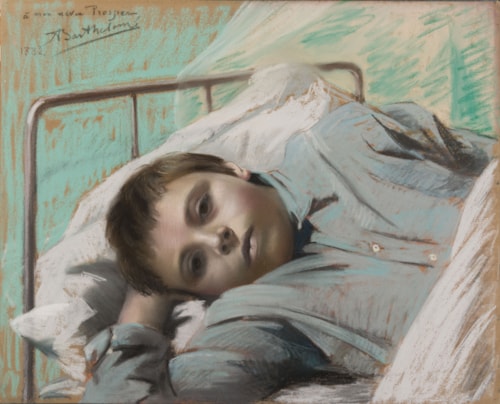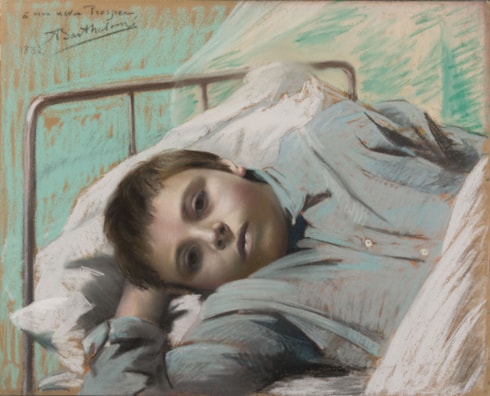
Albert BARTHOLOMÉ
Thiverval-Grignon 1848 - Paris 1928
Biography
One of the finest sculptors of the 19th century in France, Albert-Paul-Auguste Bartholomé began his career as an artist following service as a volunteer in the French army during the Franco-Prussian war of 1870-1871. He was initially active as a painter, having studied under Barthélemy Menn at the Ecole des Figures (later the Ecole des Beaux-Arts) in Geneva and with Jean-Léon Gérôme at the Ecole des Beaux-Arts in Paris. Bartholomé made his debut at the Paris Salon in 1879, showing two portraits that earned praise from the critic Joris-Karl Huysmans and the painter Edgar Degas, among others. The artist continued to exhibit paintings and pastels at the Salons between 1879 and 1884, to continued, albeit modest, critical acclaim. He became a close and lifelong friend of Degas, who may have encouraged him to try his hand at sculpture. Following the death his young wife Prospérie de Fleury in 1887, Bartholomé designed and executed an evocative sculpture – depicting the artist embracing the body of his wife - which stood over her grave in Crépy-en-Valois. From this point onwards Bartholomé worked exclusively as a sculptor, exhibiting his works at the yearly exhibitions of the Société Nationale des Beaux-Arts from 1891 onwards. He made a particular speciality of funerary sculpture, and his best-known public work is a very large Monument to the Dead in the Parisian cemetery of Père Lachaise in Paris. Measuring over ten metres in width and made up of numerous larger than life size figures flanking the entrance to a tomb, the work was executed over a period of about a decade and was completed in 1899. The following year Bartholomé won the Grand Prix for sculpture at the Paris Exposition Universelle.


